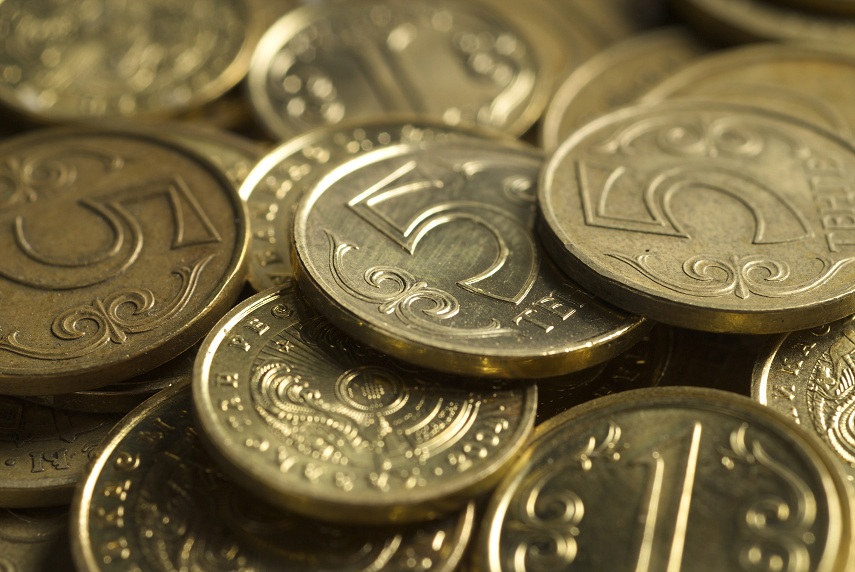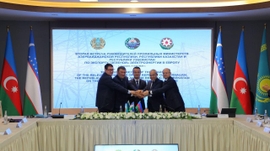Some analysts and market watchers believe that Kazakhstan’s national currency, the tenge, may dramatically lose its value this Fall, slumping somewhere between 420 and 450 Tenges per US dollar, which would mark its third steep drop since 2015.
Experts attribute the possible drop in oil prices, bank bailouts and a budget shortfall due to government expenditures for EXPO 2017, a modern version of the world’s fair currently taking place in Astana, which cost the government about $3 billion.
"The last month and a half, when the price of oil fell below $50 per barrel, we saw that the dollar began to behave more nervously,” Sergei Polygalov, chief analyst at TeleTrade Central Asia financial analyst group, told the press last week during a conference in Almaty focusing on the financial and economic situation in post-Soviet countries.
“When oil price is above $50, there is no conflict between the budget, and the [exchange] rate was 315-317 tenge per dollar. But in June, oil fell, and problems with budget financing began.”
Adding to woes is that Astana has also assisted Kazkommertsbank, the country’s largest private bank with a market share of 24 percent, with a bailout of 2.4 trillion Tenges, or about $7.28 billion, which would need to be repaid. And EXPO 2017 is not reaping the profits some had hoped.
“The expected profitability of this event will be about 280 million Euro or slightly more than 300 million dollars,” Polygalov said.
“If it will be possible to attract investments in the amount of $700 million to $1.2 billion … a shortage of $1.7 billion dollars will need to be somehow closed,” he added. "I think that at the beginning or end of November, the National Bank will go on weakening the tenge's rate.”
According to Polygalov, the National Bank of Kazakhstan is holding back devaluing the currency until after EXPO 2017 wraps up, to not scare off foreign investors.
Not everyone agrees with Polygalov’s gloomy forecast, however.
Amanjan Zhamalov, a member of the finance and budget committee in the Majilis, or lower house of parliament, said devaluation is not expected.
"Despite some interventions by the National Bank, today the tenge is in free float, and it is influenced by two main factors: the price of oil, and the [Russian] ruble to the [US] dollar," Zhamalov told Tengrinews on Monday.
“For a significant devaluation of the tenge to the level of 400 Tenges [per US dollar], an extraordinary drop in oil prices below $35 per barrel and a ruble exchange rate below 75 rubles per dollar [would need to] occur,” Zhamalov said.
As of Monday morning, the tenge stood at about 329 to the US dollar.
Internationally abbreviated “KZT,” the tenge went through two devaluations in the last ten years: one in 2009, when it was downgraded by 18 percent, and another in 2014, when it was cut by 19 percent. Between 2005 and 2009, the tenge stood around 120 per one US dollar, according to Xe.com, which tracks currency rates. After its decline in 2009, it fluctuated between 145 and 155, before falling to 180 in 2014.
Leaders in Astana, aware that the economy suffers from an overreliance on oil and extractive industries, have taken steps in recent years to diversify the economy by targeting sectors like transportation, telecommunications, petrochemicals, pharmaceuticals and food processing.
But changes have not come fast enough to soften the impact of global oil price fluctuations.
A drop in crude oil prices in 2015, the decline of the Russian ruble, and the state of the regional economy pushed Astana to put the tenge on a floating exchange rate, whereby its value is allowed to fluctuate in response to foreign-exchange market mechanisms. The move led to another sharp fall in its value.
In August 2015 the tenge saw its most dramatic decline, when it plunged by 40 percent, from around 188 Tenges per dollar to 252 per dollar within one week. By January 2016, it had plummeted to 391 per US dollar, the worst month on record since its creation in 1993.
Kazakhstan ranks tenth in terms of world oil exporters. When the price of crude fell below $35 per barrel in 2015, the economy was hit hard. Oil exports make up nearly 70 percent of Kazakhstan’s foreign trade and more than half of the state budget.
In a massive intervention to tame oil price fluctuations, members of the Organization of Petroleum Exporting Countries (OPEC) and 11 other non-OPEC oil exporting countries, including Kazakhstan and neighboring Azerbaijan, had agreed in December to limit production for the first six months of 2017 and cut production by 1.8 million barrels per day (bpd).
“Thanks to these agreements, we sold our oil for export at an average price of $52 per barrel in the first quarter [of 2017]. For comparison, prior to these agreements, Brent crude oil price was $32 in the first quarter last year,” said Kazakhstan’s Minister of Energy Kanat Bozumbayev at a press conference earlier this month, where he confirmed Astana’s commitment to cut production by 20,000 bpd under the multinational agreement.
In May, the group agreed to extend the agreement through March 2018.
MP Amanjan Zhamalov said if the price of oil hovers around $50 per barrel, he believes the tenge will not further decline in value.
"It is expected that before the end of 2017, the price of oil will fluctuate around $50 per barrel. Thus, the rate of tenge till the end of the year can be predicted within 330-340 tenge per dollar,” Zhamalov said.
Nurzhan Zhambekov, a US-based economic and political analyst, said the tenge’s value will likely remain stable. But a weak currency is not always bad news, particularly for exporters.
"A weak tenge makes imports more expensive and pushes up consumer good prices, and therefore negatively impacts the purchasing power of residents,” Zhambekov told Caspian News. “But in the long term, it will help with local production, particularly agricultural products, and exports will increase," he explained.
“Basically, the cost of imported goods go up, while exporters benefit from a weak tenge because it gives them the cost advantage over other countries.”







 The modernized and expanded Georgian segment of the Baku-Tbilisi-Kars (BTK) railway is set to recommence freight operations this month.
The modernized and expanded Georgian segment of the Baku-Tbilisi-Kars (BTK) railway is set to recommence freight operations this month.
 The Azerbaijani government has rejected the recent claims made by French Interior Minister Gérard Darmanin, who accused Baku of fostering separatis...
The Azerbaijani government has rejected the recent claims made by French Interior Minister Gérard Darmanin, who accused Baku of fostering separatis...
 The Chief of the Atomic Energy Organisation of Iran (AEOI) said that the country has allowed more than 130 inspectors of the International Atomic E...
The Chief of the Atomic Energy Organisation of Iran (AEOI) said that the country has allowed more than 130 inspectors of the International Atomic E...
 Ulviyya Fataliyeva, a female Azerbaijani chess grandmaster, was crowned this week at the European Women’s Chess Championship (EWCC) in Rhodes, Gree...
Ulviyya Fataliyeva, a female Azerbaijani chess grandmaster, was crowned this week at the European Women’s Chess Championship (EWCC) in Rhodes, Gree...



